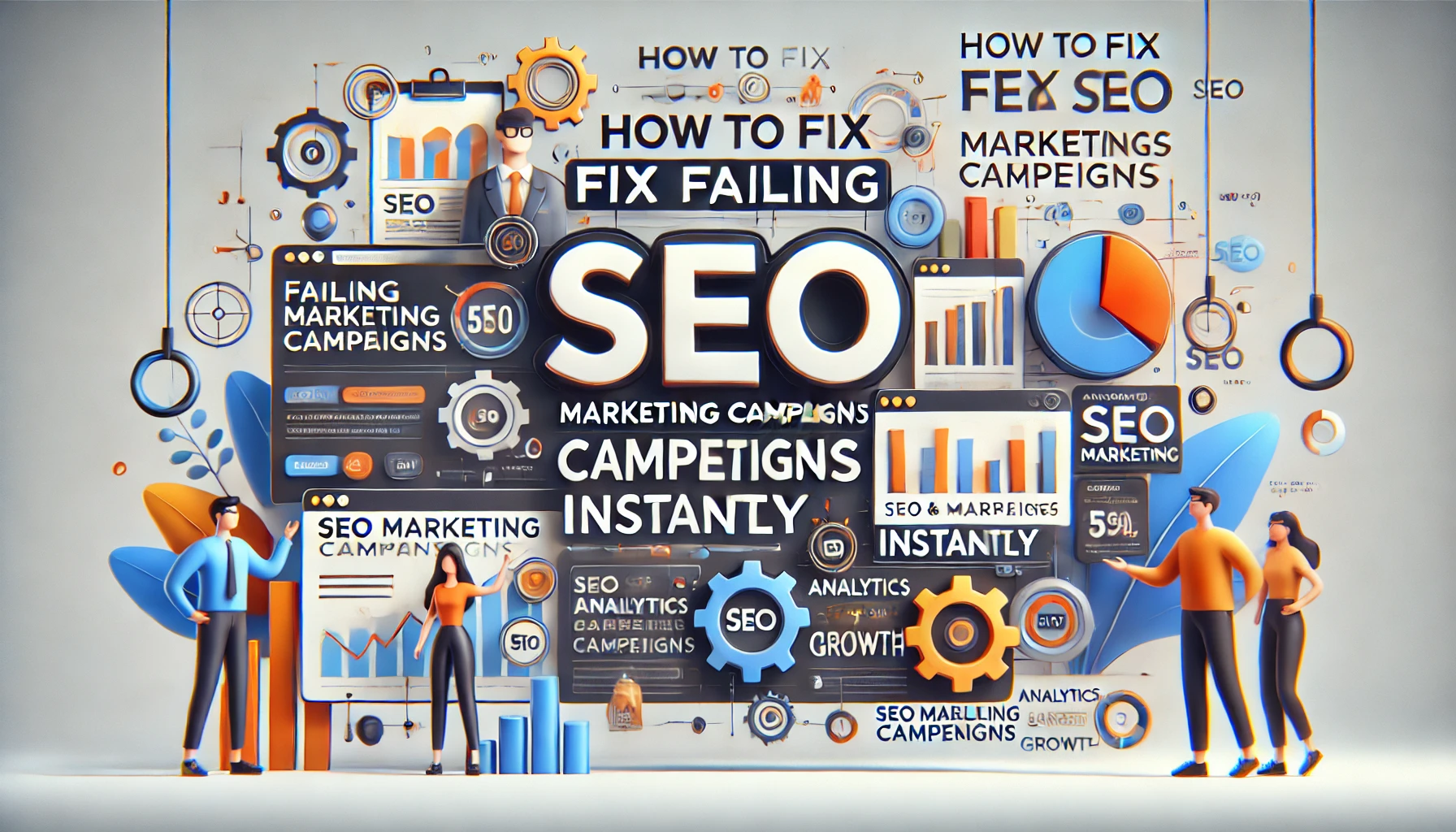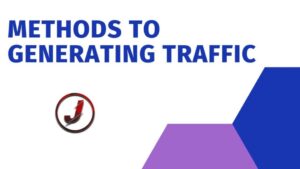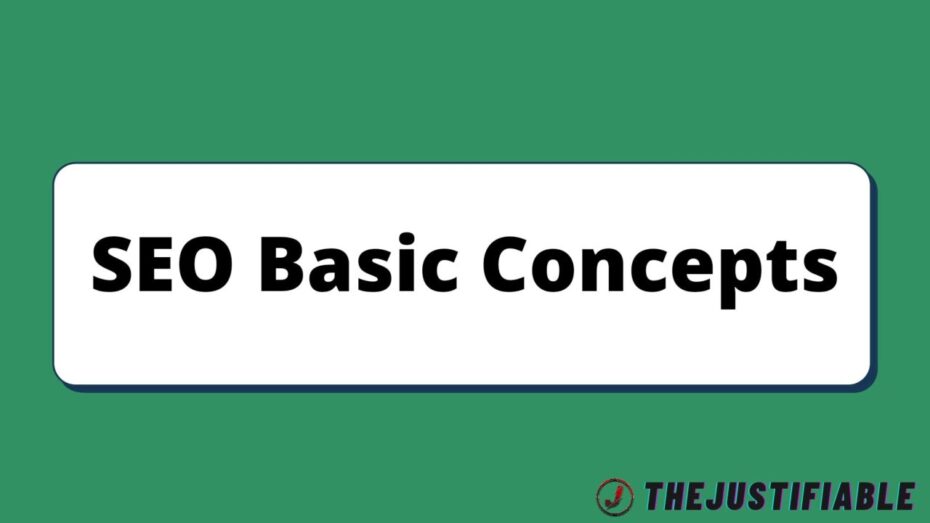Table of Contents
Are you frustrated with your current SEO marketing efforts? Have you noticed a drop in traffic, conversions, or ranking despite all your hard work?
In this guide, we’ll address the common reasons why SEO marketing campaigns fail and provide immediate solutions to get them back on track. Learn actionable strategies to fix failing SEO marketing campaigns instantly and maximize your online presence.
Understanding The Common Failures In SEO Marketing
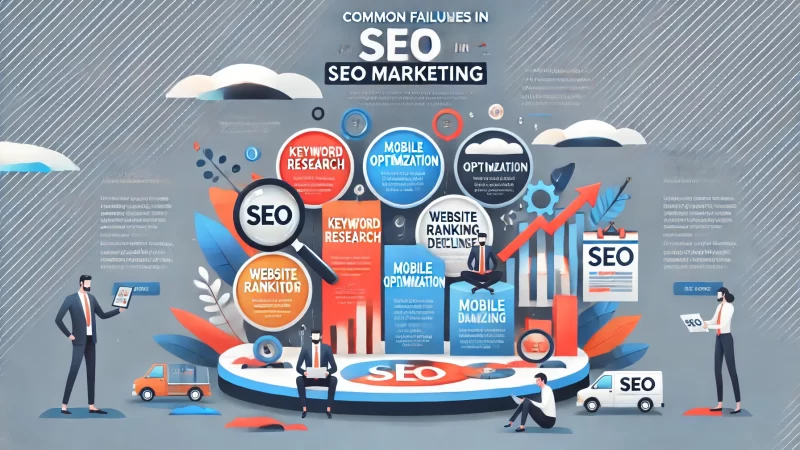
Is your SEO marketing campaign falling short of expectations? Identifying the common reasons for failure is the first step to turning things around. Let’s explore the key issues that can derail your SEO efforts and how to fix them.
Key Metrics That Indicate Your SEO Campaign Is Failing
Certain metrics clearly indicate when an SEO campaign is struggling. A decline in organic traffic often signals a drop in visibility, meaning your target audience isn’t finding your content. This is a sign that your website’s ranking has slipped.
Conversion rates are another important metric. If you have traffic but aren’t converting visitors into customers, it suggests that your content isn’t meeting their needs or expectations, affecting your overall ROI. Monitoring this can help pinpoint issues.
High bounce rates can indicate that users aren’t finding your content relevant, which can lead to a drop in rankings. When visitors leave too quickly, it signals to search engines that your page may not be offering value or matching search intent.
Slow page load speeds can also negatively impact user experience. Visitors are more likely to abandon a slow site, which can hurt both user engagement and your SEO performance. Speeding up your website can lead to an instant improvement.
Analyzing Poor Keyword Targeting And Search Intent Mismatch
One of the main reasons SEO campaigns fail is poor keyword targeting. When your content doesn’t align with the keywords users are searching for, it won’t reach the right audience. This reduces the chances of ranking well in search engines.
Understanding search intent is essential for success. When the content doesn’t match what users are looking for—whether informational, navigational, or transactional—they quickly leave the page. This results in lower engagement and higher bounce rates.
Choosing keywords that don’t reflect user queries can also lead to a loss of relevance. It’s important to continually assess whether your content is answering the right questions or providing the solutions users are seeking.
Search intent evolves over time, and so should your content. Staying updated with trends and modifying your keyword strategy ensures that your content continues to meet user expectations and remains competitive in the search results.
Signs Of Inadequate On-Page Optimization
Many SEO marketing campaigns falter due to inadequate on-page optimization. One common issue is unoptimized meta titles and descriptions, which can reduce your click-through rates and prevent your content from standing out in search results.
Another key problem is poor use of header tags. Without a clear hierarchy of H1, H2, and H3 tags, search engines struggle to interpret the structure of your content, which can hurt your rankings. Properly formatted headers improve SEO readability.
Broken internal links frustrate users and send negative signals to search engines. Fixing these links ensures a smoother user experience and better crawlability, both of which can enhance your website’s SEO performance.
Mobile optimization is critical. With more users accessing websites via mobile devices, a lack of mobile-friendly design can result in lost traffic and lower rankings. Ensuring your site is responsive is essential for modern SEO success.
Mismanagement Of Backlinks And Link Building Strategies
Backlinks are one of the most powerful factors in SEO marketing. Mismanaging them, however, can lead to poor performance. A lack of high-quality backlinks diminishes your domain authority, limiting your ability to rank highly in search results.
Focusing on quantity over quality can harm your SEO efforts. Search engines penalize websites with too many low-quality or irrelevant backlinks. Prioritizing links from reputable, authoritative sites strengthens your site’s credibility.
Ignoring your backlink profile can allow toxic links to accumulate. These links, from questionable or spammy sites, can drag down your rankings. Disavowing harmful backlinks can protect your website’s reputation and improve SEO performance.
Diversifying your backlink strategy is also important. Building a mix of backlinks from different sources—such as blogs, industry publications, and partnerships—creates a more natural backlink profile that is favored by search engines.
Weak Content Quality Affecting User Engagement
Low-quality content is a major reason why SEO marketing campaigns fail. Thin or poorly written content that lacks depth won’t engage users, leading to higher bounce rates and lower rankings. High-quality, informative content is essential to success.
If content is too sales-oriented and not informative enough, users are likely to leave quickly. People visit websites for solutions and insights, so offering value in the form of educational content is key to keeping visitors engaged and improving rankings.
Duplicate content can hurt your SEO efforts. When multiple pages on your site offer the same or very similar information, it can confuse search engines, leading to a dilution of page authority and lower rankings for both versions of the content.
Visually unappealing content can also discourage user interaction. Adding multimedia elements such as images, videos, or infographics can enhance the user experience, increase engagement, and boost your site’s overall SEO performance.
Addressing Keyword Research Errors For SEO Success
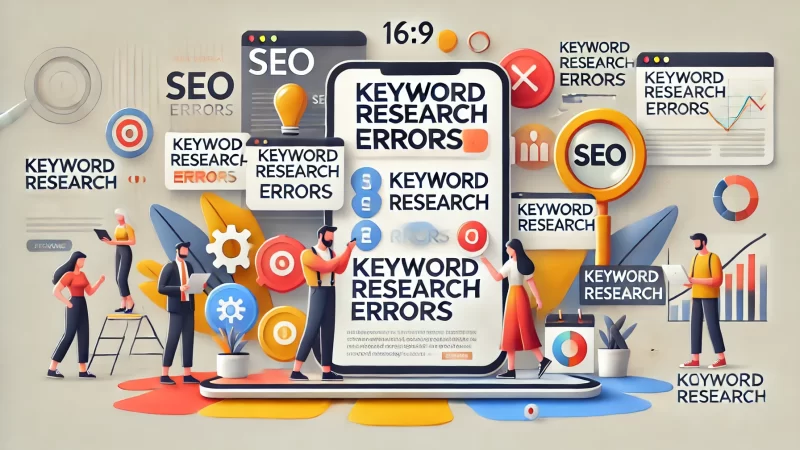
Keyword research is at the heart of successful SEO marketing. Addressing common errors in keyword selection can dramatically improve your campaign’s effectiveness and help you reach the right audience more efficiently.
Identifying High-Impact Keywords For Better Results
High-impact keywords are the backbone of any SEO marketing campaign. These are keywords with significant search volume that also match the intent of your audience. Targeting the right keywords can help drive more relevant traffic to your site.
Long-tail keywords, in particular, offer great opportunities for driving targeted traffic. These specific search terms often have less competition, making them easier to rank for and more likely to convert into meaningful interactions with your audience.
Balancing competition and relevance is crucial when selecting keywords. If a keyword is too competitive, it may be harder to rank for. Choosing a mix of high-volume and lower-competition keywords can help you build SEO momentum.
Continuously refreshing your keyword strategy ensures that your SEO remains relevant. Search trends can change over time, and adjusting your keywords based on these trends will help you stay ahead of the competition and capture new opportunities.
Avoiding Over-Optimization And Keyword Stuffing
Over-optimization can hurt your rankings. Keyword stuffing, in particular, makes content sound unnatural and disrupts the user experience. It’s important to use your primary keywords naturally to enhance readability while keeping your content SEO-friendly.
Keyword stuffing can also lead to penalties from search engines. Google’s algorithms are sophisticated enough to recognize when keywords are overused. Focus on creating content that provides value rather than focusing too much on keyword density.
Search engines prioritize quality content over keyword repetition. Use synonyms, related terms, and variations of your primary keyword to maintain a natural flow and help your content appear in a broader range of search queries.
Monitoring your keyword usage can prevent over-optimization. Tools like Google Search Console provide insights into how often keywords are used and whether your content is being flagged for keyword stuffing, allowing you to make necessary adjustments.
Optimizing Content For Long-Tail Keywords And Search Intent
Long-tail keywords are often overlooked, but they can make a big difference in driving specific, high-intent traffic. These keywords reflect what users are actively searching for and provide more precise answers to their queries.
Matching long-tail keywords with search intent helps ensure that your content provides the exact information users are looking for. Whether the intent is to learn more about a product or make a purchase, aligning content with intent improves conversions.
Placing long-tail keywords naturally in headings and throughout your content enhances SEO. This not only helps with ranking but also ensures that your content is relevant and user-friendly, leading to higher engagement rates.
Using long-tail keywords in your meta descriptions and page titles also improves click-through rates. Users are more likely to click on a result that directly answers their specific search query, which can lead to better rankings and more organic traffic.
Correcting Keyword Cannibalization Issues On Your Website
Keyword cannibalization occurs when multiple pages on your site target the same keyword. This creates competition between your own pages, which can confuse search engines and result in lower rankings for both pages.
Consolidating similar content is an effective way to address this issue. Merging pages that target the same keyword into one comprehensive resource creates a stronger, more authoritative piece of content that can rank higher in search results.
Assigning unique keywords to different pages helps prevent cannibalization. By ensuring that each page focuses on a distinct keyword or phrase, you avoid competing with yourself and can improve the overall SEO performance of your site.
Regular audits help identify and resolve keyword cannibalization issues. By using tools like Google Search Console, you can easily spot conflicting pages and take corrective action to enhance your site’s overall SEO health.
Revamping On-Page SEO For Instant Impact
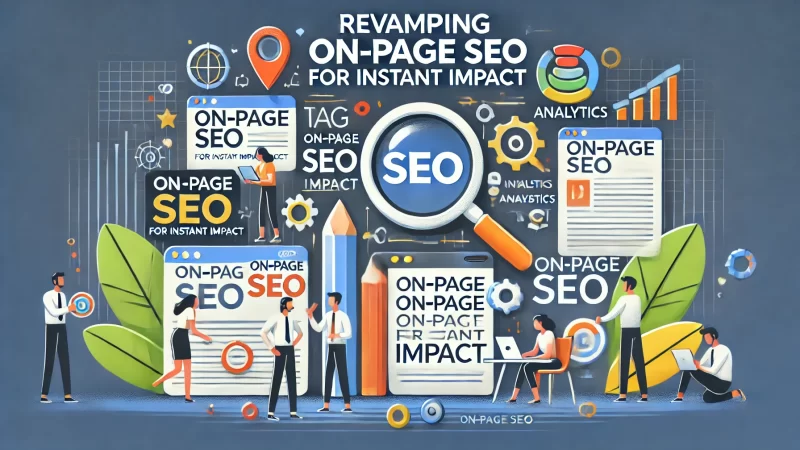
Revamping your on-page SEO can bring fast results by improving both user experience and search engine visibility. With a few adjustments to key elements, you can boost your rankings and enhance overall site performance. Let’s explore how to get started.
Improving Meta Tags, Descriptions, And Titles For CTR Boost
Meta tags, descriptions, and titles play a vital role in attracting users to click on your pages from search results. I’ve found that well-crafted titles can significantly improve your click-through rates (CTR), helping drive more traffic to your site.
I suggest using engaging, descriptive titles that incorporate relevant keywords naturally. This not only helps search engines understand your content but also grabs the attention of potential visitors, increasing the likelihood of clicks.
Meta descriptions should concisely explain what the page is about, ideally including the primary keyword. A clear, compelling description can entice users to choose your result over others in the search engine results page (SERP).
It’s important to keep both titles and descriptions within their character limits. Too long, and search engines might truncate them, which could reduce their effectiveness. A concise approach ensures users see your full, optimized message.
Optimizing URL Structure To Improve Crawlability
A clean, well-organized URL structure helps both users and search engines navigate your site more effectively. Search engines use URLs to understand the hierarchy of your site, so I recommend keeping them short, descriptive, and keyword-rich when possible.
URLs that are cluttered with numbers or random characters make it harder for search engines to crawl and index your pages. Simplified, logical URLs improve crawlability and enhance the chances of ranking higher in relevant searches.
I’ve noticed that incorporating your primary keyword in the URL can help with rankings. However, avoid overstuffing it with keywords, as this can negatively impact both user experience and SEO performance.
Consistent URL formatting is also key. Stick to lowercase letters and hyphens between words for readability. Consistency in your URLs not only looks more professional but makes it easier for search engines to process your content.
Enhancing Internal Linking For Better SEO Flow
Internal linking is an effective way to spread link equity across your site and help search engines understand the relationship between your pages. I’ve found that a strong internal linking structure improves SEO while guiding users through valuable content.
By linking related pages, you create a seamless experience for users, encouraging them to stay longer on your site. The longer they stay, the more signals you send to search engines that your content is engaging and valuable, which can improve rankings.
I recommend linking to cornerstone content, which represents your most important pages. These links pass authority and can boost the visibility of your top-performing pages. It’s an effective way to help key pages rank higher in search results.
Another strategy is to use relevant anchor text for internal links. This gives search engines more context about what the linked page is about, helping them rank it appropriately. The more clarity you provide, the better your SEO results.
Fixing Technical SEO Issues Slowing Your Website Down
Technical SEO plays a big role in how search engines index your website, and slow-loading pages can hurt your rankings and user experience. I recommend regularly auditing your site to identify and fix technical SEO issues that may be slowing things down.
Page speed is crucial. A slow-loading page frustrates users and increases bounce rates, which negatively affects your SEO. Optimizing images, using browser caching, and minimizing JavaScript can all improve page speed and SEO performance.
I suggest checking for broken links and 404 errors. These technical issues create poor user experiences and prevent search engines from crawling your site effectively. Tools like Serpstat can help identify and resolve these problems.
Ensuring that your website is mobile-friendly is another important aspect of technical SEO. As more people browse on mobile devices, search engines prioritize sites that offer a seamless mobile experience, rewarding them with higher rankings.
Fixing Content-Related Problems For Better SEO Performance
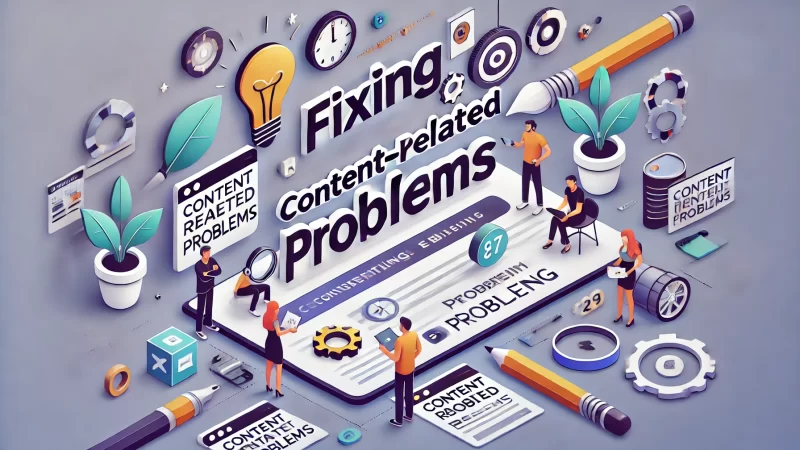
Content is at the core of any successful SEO marketing strategy. Ensuring your content is relevant, up-to-date, and engaging can significantly improve your rankings and user engagement. Let’s dive into some actionable strategies to enhance your content.
Enhancing Content Relevance And Targeting Search Intent
Creating relevant content that directly addresses user needs is key to boosting SEO performance. I’ve learned that aligning your content with user search intent can help capture the right audience and keep them engaged, which improves ranking potential.
I suggest identifying whether users are looking for informational, navigational, or transactional content. This allows you to tailor your content to their needs. Meeting search intent not only increases engagement but also boosts your authority in the niche.
Optimizing your content with related keywords and phrases can also enhance relevance. Instead of focusing solely on primary keywords, I recommend including natural variations that provide more context and depth to your content.
Staying on top of user behavior changes is essential. Search intent evolves over time, and content that was once relevant may no longer meet user expectations. Regularly reviewing and updating your content ensures that it remains aligned with current needs.
Refreshing Outdated Content To Improve Ranking
Refreshing old content is an effective way to boost your rankings without having to create entirely new pages. I suggest revisiting older blog posts and articles that have lost traction over time, updating them with fresh information to make them relevant again.
When updating content, I’ve noticed that adding recent statistics, new insights, and current trends can breathe new life into an old post. These updates not only provide more value to readers but also signal to search engines that the content is up to date.
Another technique is to optimize the content for new keywords that have emerged since the post was first published. This can help attract a new audience while still maintaining the authority the post has already built over time.
I advise checking internal links within older content. Often, outdated links can harm the user experience. By ensuring all links are functional and pointing to relevant pages, you can boost both SEO performance and user satisfaction.
Creating Engaging Content That Attracts Quality Backlinks
Quality backlinks remain one of the most important ranking factors in SEO. I’ve found that creating highly engaging, shareable content increases the likelihood of earning these valuable backlinks from authoritative sites in your industry.
Content that answers common questions or provides in-depth guides is often the type that earns backlinks naturally. I suggest focusing on creating evergreen content that continues to offer value long after it’s published.
Infographics, videos, and interactive content tend to attract more attention and shares. I recommend using these formats where appropriate, as they encourage other sites to link back to your content, which boosts your domain authority.
When crafting content, I’ve also seen success in promoting it through outreach. Sharing your best work with influencers, bloggers, and industry leaders can help you build relationships and secure high-quality backlinks from reputable sources.
Optimizing Content Readability And Formatting For SEO
Content readability is essential for both users and search engines. If your content is hard to read or poorly formatted, visitors will likely leave quickly. I recommend using short paragraphs, bullet points, and clear headings to improve the reader’s experience.
I suggest breaking up text with subheadings that are informative and keyword-optimized. This makes it easier for both search engines and readers to understand your content and helps with ranking for relevant search queries.
Using images and videos throughout your content enhances engagement. I’ve noticed that visual elements help retain readers and keep them interested, which can lower bounce rates and improve your SEO performance over time.
Formatting also includes font size and spacing. Content that’s easy to read and navigate on both desktop and mobile devices encourages users to stay longer on the page, signaling to search engines that your site provides value to its visitors.
Boosting Off-Page SEO Strategies To Fix Declining Authority
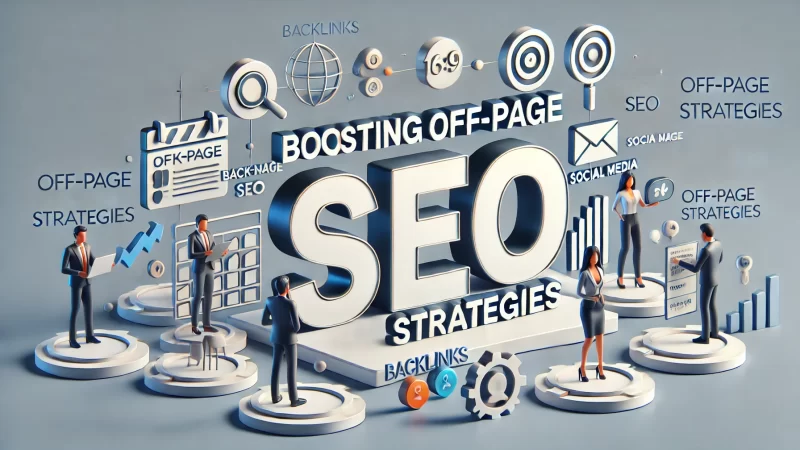
Off-page SEO plays a vital role in establishing your website’s authority and improving search rankings. To fix declining authority, focusing on strategies like building quality backlinks and leveraging external engagement channels can make an immediate difference.
Building High-Quality Backlinks To Improve Domain Authority
High-quality backlinks from authoritative sites are essential for improving your domain authority. I recommend focusing on earning links from websites within your niche, as they carry more weight and relevance for search engines.
I’ve learned that guest posting is a highly effective way to build backlinks. Contributing valuable content to authoritative sites not only earns you a backlink but also positions you as an expert in your industry, driving referral traffic.
Another approach I’ve seen work well is the “skyscraper technique.” This involves finding popular content in your niche, creating a more comprehensive version, and reaching out to sites that linked to the original content. Many will link to your improved version.
I suggest regularly monitoring your backlink profile. Tools like Ahrefs or SEMrush can help you track new backlinks and ensure that your site is gaining high-quality links over time. Keeping a pulse on your backlinks helps maintain your domain authority.
Using Social Signals And Engagement For Off-Page SEO
Social signals, such as likes, shares, and comments, indicate to search engines that your content is relevant and engaging. I’ve noticed that when content is widely shared on social media platforms, it tends to rank better due to higher visibility.
To leverage social signals effectively, I advise creating shareable content that resonates with your audience. Infographics, blog posts, and videos that offer valuable insights tend to perform well on platforms like Facebook, LinkedIn, and Twitter.
I suggest interacting with your followers regularly. Engagement doesn’t just help with brand awareness; it encourages users to share your content further, amplifying your off-page SEO efforts. The more interactions, the stronger the signal to search engines.
Incorporating social media sharing buttons on your site can also enhance visibility. When readers can easily share your content, it increases the chances of it reaching a wider audience, which indirectly boosts your SEO performance through external links.
Identifying And Disavowing Harmful Backlinks To Protect Ranking
Not all backlinks are beneficial. Harmful backlinks from spammy or irrelevant sites can drag down your ranking. I recommend regularly auditing your backlink profile to identify any toxic links that could be negatively impacting your SEO.
I’ve found that using Google’s Disavow Tool is an effective way to protect your site from harmful backlinks. This tool allows you to tell Google not to take certain links into account when evaluating your site, helping you avoid penalties.
To identify harmful backlinks, I suggest using tools like Moz or Ahrefs. These platforms can highlight low-quality links that could be damaging your domain authority. Once identified, you can request removal from the linking site or disavow them.
Preventing bad backlinks in the first place is also crucial. I recommend being selective about who you partner with for link-building efforts. Stick to high-authority sites within your industry to ensure all backlinks add value to your SEO strategy.
Leveraging Influencers To Strengthen Your Off-Page SEO
Influencers can be powerful allies in boosting your off-page SEO. When industry experts link to your content or promote it to their followers, it enhances your credibility and drives traffic. I’ve seen influencer partnerships significantly improve domain authority.
I advise identifying influencers who align with your brand and have a genuine connection with your target audience. This ensures that their endorsement is authentic, which can lead to more meaningful engagement and better SEO results.
Collaborating on content, such as guest blog posts or social media campaigns, is a great way to gain exposure. When influencers share your content with their followers, it can lead to more backlinks and higher engagement across various platforms.
I’ve noticed that long-term relationships with influencers yield the best results. Consistent collaboration not only strengthens your off-page SEO over time but also builds trust with your audience, leading to sustained traffic and domain authority growth.
Analyzing And Fixing Your Technical SEO Challenges
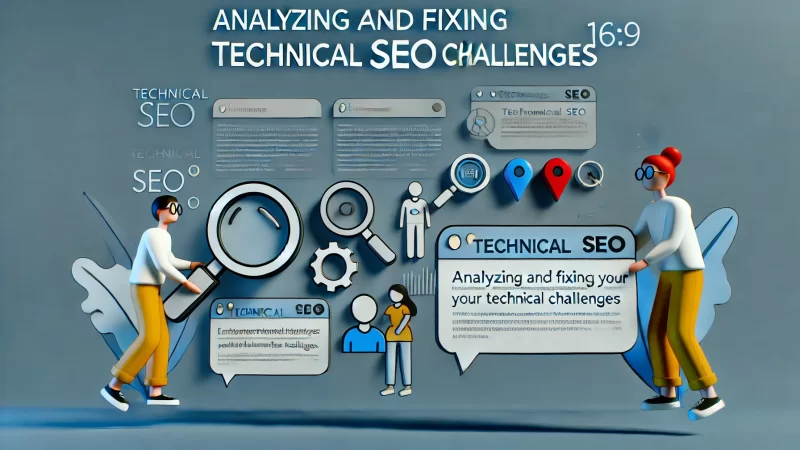
Technical SEO issues can severely limit your website’s performance, even if your content and backlinks are strong. Addressing common technical challenges like indexing problems, site speed, and broken links can lead to immediate improvements in rankings.
Solving Indexing Issues With Search Engine Crawlers
If search engines aren’t indexing your pages properly, your site won’t appear in search results. I suggest using Google Search Console to check for any crawl errors or issues preventing certain pages from being indexed.
I recommend creating and submitting an updated XML sitemap to ensure all important pages are discoverable. A well-structured sitemap acts as a roadmap for search engines, making it easier for crawlers to navigate and index your content.
Another tip is to check your site’s robots.txt file. I’ve found that misconfigured files can accidentally block crawlers from indexing certain pages. Reviewing and correcting any issues here ensures that search engines can access your entire site.
I’ve also noticed that addressing duplicate content helps with indexing. Search engines may struggle to index duplicate pages properly, so consolidating similar content or using canonical tags can resolve this issue and improve overall crawlability.
Improving Page Speed And Mobile Optimization For SEO
Page speed is a critical factor in SEO. Slow-loading sites lead to poor user experience, higher bounce rates, and lower rankings. I advise compressing images, enabling browser caching, and using a content delivery network (CDN) to speed up your site.
Mobile optimization is equally important. With more users browsing on mobile devices, I’ve seen a significant boost in rankings for sites that offer a seamless mobile experience. Make sure your site is responsive and loads quickly on all devices.
I also suggest using tools like Google PageSpeed Insights to monitor and improve your site’s performance. These tools provide actionable recommendations for enhancing both desktop and mobile speed, which directly impacts SEO.
Optimizing for mobile doesn’t just stop at speed. I recommend ensuring that navigation is simple and that text is easy to read on smaller screens. Search engines favor sites that deliver excellent user experiences across all platforms.
Using Structured Data And Schema Markup To Improve Visibility
Structured data and schema markup help search engines understand the content on your site better. I recommend implementing schema for important elements like reviews, products, and events to improve visibility in rich snippets.
Schema markup can increase your chances of appearing in rich results, which enhances your site’s visibility. I’ve noticed that sites using structured data often outperform competitors in terms of click-through rates, as their listings stand out more.
I advise using Google’s Structured Data Markup Helper to implement schema correctly. This tool simplifies the process and ensures that search engines can interpret your data accurately, improving the chances of being featured in enhanced search results.
Incorporating structured data into your content strategy adds more depth to your SEO. It not only helps search engines understand your site but also improves user experience by providing clearer, more useful information directly in the SERPs.
Fixing Broken Links And Redirects Affecting SEO Performance
Broken links and incorrect redirects can harm your SEO performance by disrupting the user experience and confusing search engines. I suggest using a tool like Screaming Frog to identify and fix broken links across your site.
When a broken link is found, I recommend setting up a 301 redirect to guide users to the correct page. This helps preserve the link equity and ensures that users still reach the content they’re looking for, maintaining SEO value.
I also advise regularly checking for internal broken links. These can be easily overlooked, but they create a poor user experience and negatively impact SEO. Ensuring all links within your site are functional improves both navigation and ranking potential.
Reviewing your redirect strategy is essential as well. I’ve noticed that using too many redirects or improper ones can slow down your site and confuse search engines. Aim for clean, efficient redirects that maintain link authority and user flow.
Auditing Your Website For Effective SEO Optimization
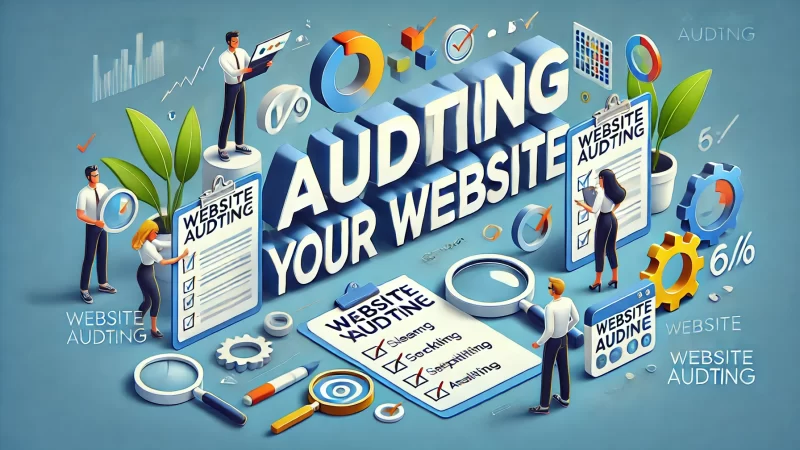
A comprehensive SEO audit allows you to uncover hidden issues that may be affecting your site’s performance. Regular audits help ensure your website is fully optimized and remains competitive in search rankings.
Identifying And Fixing SEO Errors With A Comprehensive Audit
A thorough audit helps identify technical and content-related errors that could be impacting your rankings. I recommend using tools like SEMrush or Ahrefs to perform a complete SEO audit, pinpointing issues like broken links, missing metadata, and crawl errors.
I suggest focusing on on-page elements like meta tags, headers, and image alt text during your audit. These factors play a significant role in SEO, and optimizing them can lead to quick improvements in your ranking performance.
Auditing your backlink profile is another crucial step. I’ve found that identifying low-quality or spammy backlinks during an audit allows you to disavow harmful links and protect your domain authority from potential penalties.
Regular audits should be a part of your ongoing SEO strategy. I recommend performing them quarterly to stay ahead of any potential issues and ensure your site remains in optimal condition for both search engines and users.
Using Google Search Console For Real-Time SEO Insights
Google Search Console is an invaluable tool for tracking your site’s SEO performance. I advise using it to monitor search traffic, track keywords, and identify any technical issues like crawl errors or security problems that need attention.
I suggest reviewing your site’s indexing status in Search Console to ensure all your important pages are being crawled and indexed properly. This tool provides insights into how Google views your site, allowing you to fix any visibility issues.
You can also track keyword performance using Search Console. I’ve found it useful to monitor which queries are driving traffic and where your pages rank for specific keywords. This data helps refine your SEO strategy to target the most effective terms.
Real-time reporting from Search Console allows you to quickly address issues as they arise. I recommend checking your reports regularly to stay informed of any sudden changes in performance that may require immediate action.
Optimizing Core Web Vitals To Improve User Experience And SEO
Core Web Vitals measure your site’s loading performance, interactivity, and visual stability—factors that directly impact user experience and SEO. I recommend focusing on optimizing these metrics to boost your site’s overall performance.
I’ve noticed that improving Largest Contentful Paint (LCP) can reduce page load times, which improves user experience. Techniques like optimizing images and reducing server response times can help you achieve faster load speeds, which benefits your SEO.
First Input Delay (FID) measures interactivity. I suggest reducing JavaScript execution time to enhance this metric. A quicker response time leads to a more seamless experience for users, which is rewarded by search engines with better rankings.
Cumulative Layout Shift (CLS) measures visual stability. I recommend ensuring elements like images and ads don’t shift unexpectedly as the page loads. Stabilizing your site’s layout enhances usability, improving both engagement and search performance.
Auditing Content Performance To Revitalize Stagnant Pages
Sometimes, content that once performed well can become stagnant. I recommend auditing your content regularly to identify which pages are no longer attracting traffic or engagement. Updating these pages with fresh content can help revitalize them.
I’ve found that adding new statistics, insights, or trends can give old content new life. Regularly refreshing your pages ensures they remain relevant and continue to attract readers, which boosts rankings and user interaction.
Another strategy is to optimize underperforming content for new keywords. I suggest using tools like Google Keyword Planner to find emerging search terms that align with your content. Updating pages with these terms can improve their visibility in search results.
Finally, I recommend improving the internal linking of stagnant pages. Directing traffic from high-performing pages to underperforming ones can boost their visibility and engagement, helping to restore their SEO value.
Improving User Experience (UX) To Maximize SEO Benefits

Improving user experience (UX) is key to maximizing your SEO efforts. A well-optimized website provides a seamless, engaging experience for visitors, which encourages them to stay longer, reduces bounce rates, and improves search engine rankings.
Enhancing Site Navigation For Better User Interaction
Clear and intuitive navigation is essential for good UX. I believe visitors should be able to find what they need without confusion. A well-structured menu and internal linking help guide users smoothly through your site, improving overall interaction.
I’ve noticed that adding breadcrumbs can enhance navigation by showing users their path through your site. This feature improves both user experience and SEO, as search engines also benefit from the organized structure.
A logical, consistent hierarchy in your navigation menu helps search engines crawl and index your site more efficiently. I suggest limiting categories to avoid overwhelming visitors, helping them quickly locate content and boosting their engagement.
I recommend testing your site’s navigation regularly. I’ve found that overcomplicated menus or broken links can frustrate users, leading to higher bounce rates. Streamlining navigation ensures a smooth user experience, which positively impacts SEO.
Improving Mobile Usability For Stronger SEO Results
Mobile usability is crucial for modern SEO success. I think it’s important to ensure your site looks and functions well on all mobile devices, as search engines prioritize mobile-first indexing. A responsive design can significantly improve your rankings.
I’ve noticed that optimizing page load speeds on mobile devices is essential. Slower loading times lead to higher bounce rates, which signals to search engines that your site isn’t providing a good user experience, thus lowering your SEO ranking.
I suggest using larger fonts and touch-friendly buttons for mobile users. This makes it easier for visitors to navigate your site on smaller screens, enhancing their experience and reducing frustration, which ultimately helps your SEO.
Mobile usability also involves removing intrusive pop-ups. I find that users tend to leave sites when bombarded with pop-ups, especially on mobile. Ensuring a smooth, interruption-free experience will keep visitors on your page longer, improving engagement.
Prioritizing Site Security And HTTPS For SEO Gains
Site security is another important aspect of both user experience and SEO. I recommend switching to HTTPS if you haven’t already. It shows visitors that your site is secure, building trust and improving your ranking in search results.
I’ve learned that search engines favor secure sites, particularly since HTTPS protects users’ data. Sites with HTTPS are more likely to rank higher than those without, which is why securing your site is crucial for SEO success.
A secure site also reassures users when they are sharing personal information or making purchases. I suggest displaying security badges and certificates to further build trust, which leads to higher engagement and improved SEO performance.
I’ve heard that regularly updating your site’s security features is critical. Outdated security protocols can expose your site to vulnerabilities, which not only harms user trust but can also lead to penalties from search engines, hurting your rankings.
Using Heatmaps And Analytics To Improve User Experience
Heatmaps provide valuable insights into how users interact with your website. I find them incredibly useful for identifying areas where users spend the most time or where they tend to drop off, which helps pinpoint UX improvements that can boost SEO.
Heatmaps can show which elements on a page are capturing the most attention. I suggest using this data to adjust the placement of important content, such as CTAs or product links, to increase conversions and improve user engagement.
I recommend pairing heatmaps with session recordings. These tools allow you to observe individual user behavior, providing a deeper understanding of any pain points. Fixing these issues can lead to a smoother user experience and better SEO results.
Analytics tools, like Kissmetrics, are essential for tracking and improving UX. I’ve learned that monitoring user behavior metrics, such as time on page and bounce rate, can reveal key areas for optimization, ultimately benefiting your SEO.
Measuring The Success Of Your SEO Campaign Improvements

Tracking the success of your SEO campaign ensures you stay on course and continue making progress. I believe regularly measuring key performance indicators (KPIs) and analyzing data allows you to refine your strategy and achieve better results.
Tracking SEO Performance With Key Metrics And KPIs
Key metrics like organic traffic, conversion rates, and keyword rankings are essential for tracking your SEO success. I recommend focusing on these KPIs to understand how well your campaign is performing and to identify areas for improvement.
I’ve found that monitoring organic traffic growth gives a clear indication of whether your SEO efforts are driving visitors to your site. If traffic isn’t increasing, I suggest revisiting your strategy to see if your keywords and content align with user intent.
Conversion rates are equally important. Even if your traffic is high, poor conversions can indicate that your site isn’t meeting user needs. I advise optimizing landing pages and CTAs to ensure visitors take the desired action.
It’s important to track bounce rates as well. I think a high bounce rate may suggest that users aren’t finding what they’re looking for on your site, signaling a need for better content or design adjustments to keep visitors engaged.
Monitoring Keyword Ranking Improvements After Optimization
Tracking keyword rankings shows how your content performs in search results. I recommend using tools like SEMrush or Ahrefs to monitor which keywords are improving and which need more attention, allowing you to refine your SEO strategy over time.
I find that focusing on long-tail keywords can lead to quicker ranking improvements. These keywords often have less competition and target more specific user intent, making it easier to achieve better positions in search engine results.
I advise regularly updating your content to maintain keyword rankings. Search engines reward fresh, relevant content, and staying on top of trends can help keep your pages ranking high for their targeted keywords.
It’s also important to track local keywords if your business operates in a specific region. I’ve noticed that optimizing for local search terms can drive targeted traffic and improve your visibility within local search results, boosting your overall SEO success.
Analyzing Traffic, Conversions, And Bounce Rate Changes
I think regularly analyzing traffic sources can reveal important insights into how users are finding your site. Organic, direct, and referral traffic can all provide clues about which strategies are working and where you may need to adjust your efforts.
I recommend keeping an eye on conversion rate changes after SEO optimizations. If your conversions are increasing, it’s a sign that your improvements are resonating with users and driving more meaningful actions on your site.
I’ve found that a sudden spike or drop in bounce rates can indicate a problem. If your bounce rate increases after a change, I suggest revisiting the content or design to ensure it still aligns with user expectations and delivers value.
Tracking time on site and pages per session provides additional context about user engagement. I advise using this data to identify whether users are exploring multiple pages or leaving after viewing only one, which can guide your next steps in SEO.
Using Analytics Tools To Continuously Improve SEO Performance
Analytics tools are essential for ongoing SEO improvements. I recommend using Google Analytics, SEMrush, or Ahrefs to gather detailed reports on user behavior, keyword performance, and site health, allowing you to make data-driven decisions.
I’ve learned that setting up custom dashboards in Google Analytics helps track specific SEO metrics more efficiently. Tailoring these reports to your needs makes it easier to identify trends and areas for optimization, saving you time and effort.
I also suggest using Google Search Console to monitor crawl errors, page indexing, and keyword performance. Regularly reviewing these insights can help you address any technical issues quickly, ensuring your site remains SEO-friendly.
Regularly reviewing and updating your SEO strategy based on analytics data is key. I’ve found that even small adjustments, such as optimizing underperforming content or addressing technical issues, can lead to significant improvements in SEO over time.
Setting Long-Term SEO Goals And Maintaining Campaign Success

Setting long-term SEO goals is essential for sustained success. I advise developing a clear, strategic plan that aligns with your business objectives, ensuring your SEO efforts continue to deliver results over time, even as search algorithms evolve.
Establishing A Robust SEO Strategy For Sustained Growth
A robust SEO strategy focuses on both short-term wins and long-term goals. I recommend creating a mix of tactics, including content creation, technical SEO fixes, and link building, to ensure your site steadily improves its rankings over time.
I’ve noticed that regularly publishing high-quality content keeps your site fresh and relevant, helping to maintain search engine interest. Establishing authority in your niche by consistently offering valuable insights helps your site grow organically.
I suggest setting specific, measurable goals for your SEO efforts. For example, aim to increase organic traffic by a certain percentage each quarter. Clear goals provide direction and help you evaluate the effectiveness of your strategy.
It’s also important to balance SEO with other marketing channels. While SEO can drive long-term growth, integrating it with social media, paid ads, and email marketing can create a more well-rounded approach to building your brand’s online presence.
Continuously Adapting To SEO Algorithm Updates And Changes
Search engine algorithms are constantly evolving. I think staying informed about the latest updates is crucial for maintaining your rankings. Following SEO news and adjusting your strategy as needed ensures your site remains competitive.
I recommend regularly auditing your site to check for any negative impacts from algorithm updates. I’ve seen sites lose rankings due to outdated practices, so keeping your SEO methods current is key to avoiding penalties and maintaining growth.
Incorporating user-focused updates, such as improving page experience and Core Web Vitals, will help you adapt to future algorithm changes. I suggest staying proactive with these updates to ensure your site continues to meet SEO standards.
I’ve also found that diversifying your traffic sources protects against algorithm fluctuations. By not relying solely on search engines, you reduce the risk of losing traffic from any one change and can maintain a steady flow of visitors.
Creating A Content Calendar To Maintain Fresh SEO Content
A content calendar helps keep your SEO efforts organized. I suggest planning content around keyword research, seasonal trends, and upcoming industry news to ensure you consistently publish fresh, relevant material that resonates with your audience.
I’ve learned that publishing content regularly can improve search engine visibility. Creating a schedule for blog posts, videos, and other resources keeps your site updated, which is something search engines reward with better rankings.
I recommend repurposing existing content into different formats. For example, turning blog posts into infographics or videos can expand your reach and engage a wider audience, while still optimizing for SEO with targeted keywords.
Tracking the performance of each piece of content is essential. I advise reviewing your content calendar regularly and adjusting future plans based on what has performed well in the past, ensuring continued engagement and SEO success.
Building A Strong SEO Team To Support Ongoing Campaigns
A dedicated SEO team is crucial for managing all aspects of your strategy. I’ve seen that having experts in technical SEO, content creation, and link building ensures that every part of your campaign is handled effectively, driving consistent results.
I suggest clearly defining roles within your team. For example, have one person focus on on-page SEO, while another handles outreach and backlinks. This division of tasks ensures that every area gets the attention it needs to thrive.
I believe ongoing education is key for your team’s success. SEO is an ever-changing field, so I recommend providing opportunities for your team to attend webinars, read industry blogs, and learn new techniques to stay ahead of the curve.
Regular team meetings help maintain focus and track progress. I suggest setting monthly goals and reviewing key metrics to ensure everyone is aligned and working towards the same long-term SEO objectives.
Frequently Asked Questions (FAQ)
Why is my SEO marketing campaign not generating traffic?
Several factors can contribute to low traffic in an SEO campaign. These include poor keyword targeting, content that doesn’t align with search intent, inadequate on-page optimization, or technical issues such as slow page load speeds and broken links. A comprehensive audit is required to pinpoint the exact cause.
How can I tell if my SEO campaign is failing?
Key metrics that indicate a failing SEO campaign include a decline in organic traffic, low conversion rates, high bounce rates, and slow website speeds. These are signs that your site may not be ranking well, and users aren’t engaging with your content.
What are common keyword research mistakes in SEO?
Poor keyword targeting, such as selecting overly competitive keywords or failing to match search intent, can hurt your SEO campaign. Additionally, keyword stuffing and ignoring long-tail keywords are common errors that can negatively impact performance.
What is keyword cannibalization, and how do I fix it?
Keyword cannibalization occurs when multiple pages on your site compete for the same keyword, leading to lower rankings for both pages. To fix it, consolidate similar content or assign unique keywords to each page to ensure they target different queries.
Why is my content not ranking despite being optimized?
If your content isn’t ranking, it may be due to weak backlinks, outdated information, poor readability, or a mismatch between your content and user search intent. It’s important to regularly update content and focus on earning high-quality backlinks.
How can I improve my website’s on-page SEO instantly?
Quick on-page SEO improvements include optimizing meta tags, titles, and descriptions, improving the use of header tags (H1, H2, H3), fixing broken links, speeding up page load times, and enhancing mobile optimization.
How do I fix poor conversion rates on my site?
Low conversion rates might stem from content that doesn’t meet user expectations, unclear calls-to-action (CTAs), or a slow and non-mobile-friendly website. Enhancing user experience, matching content with search intent, and simplifying the conversion process can help.
What should I do if my bounce rate is high?
High bounce rates indicate that users are leaving your site without engaging. This could be due to irrelevant content, slow load speeds, or poor user experience. To lower bounce rates, ensure your content aligns with user intent, improve page load speed, and make navigation easy.
How can I fix technical SEO issues on my website?
To address technical SEO problems, perform regular site audits to identify slow-loading pages, broken links, 404 errors, and mobile responsiveness issues. Tools like Google Search Console or Screaming Frog can help you detect and fix these problems.
How can I improve my backlink profile?
Focus on earning high-quality backlinks from reputable websites rather than relying on a large quantity of low-quality links. Remove toxic backlinks by using Google’s Disavow Tool and build a diverse backlink profile through guest posting and influencer partnerships.
What role does mobile optimization play in SEO?
Mobile optimization is crucial for modern SEO success as search engines prioritize mobile-friendly websites. A responsive design, fast load times, and easy navigation on mobile devices are key factors for improving mobile SEO performance.
How do I avoid over-optimization in SEO?
Over-optimization, particularly keyword stuffing, can lead to penalties from search engines. Use primary keywords naturally and complement them with related terms. Focus on creating valuable content that provides a good user experience rather than focusing too much on keyword density.
What is the importance of user experience (UX) in SEO?
Good user experience keeps visitors on your site longer and reduces bounce rates, which positively impacts SEO. Simple navigation, fast loading speeds, and mobile-friendly designs all contribute to better UX, which search engines reward with higher rankings.
How can I improve my website’s content for better SEO performance?
Create content that aligns with user search intent, add multimedia elements like images or videos, and optimize it for readability using short paragraphs and headers. Regularly updating outdated content with new insights and trends can also boost its performance.
What is the fastest way to recover from a drop in rankings?
To recover from a ranking drop, audit your site for technical issues, improve page load speeds, refresh old content, ensure mobile optimization, and focus on building high-quality backlinks. Quick fixes such as resolving broken links and updating meta descriptions can also lead to faster improvements.


